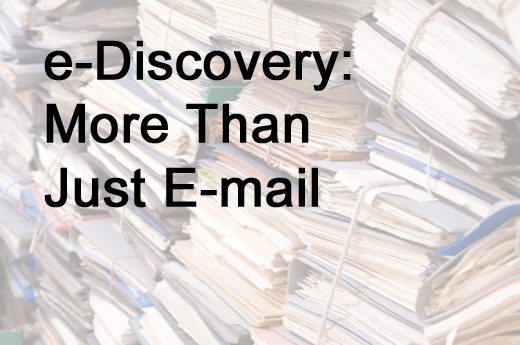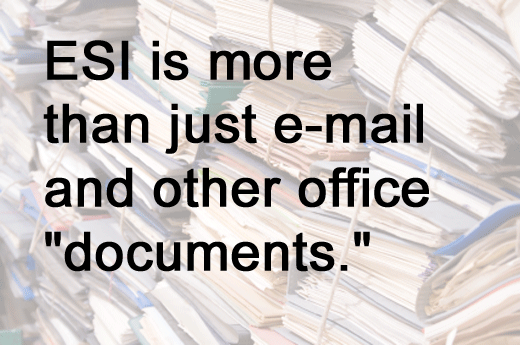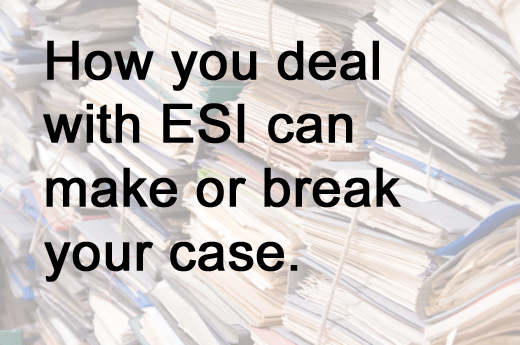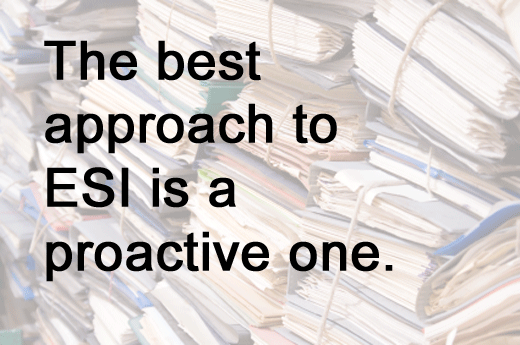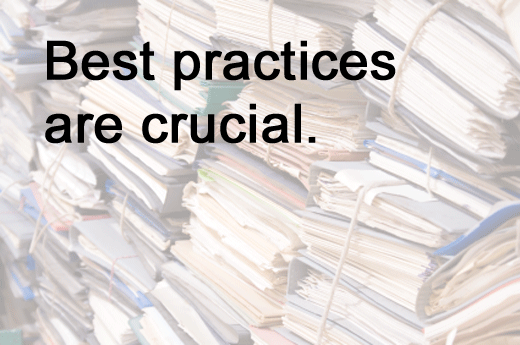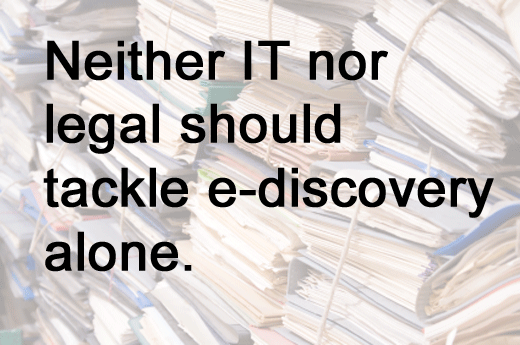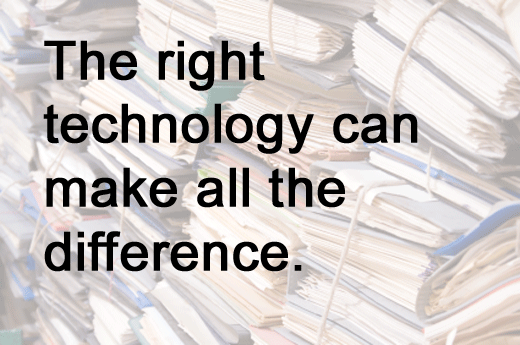
After three years of talking to experts in the field, like Recommind VP Craig Carpenter or InBoxer CEO Roger Matus, our Lora Bentley has gathered quite a few pointers on how to avoid e-discovery pitfalls, and a handful of them have come up several times. For instance, most everyone is quick to remind companies that ESI is more than just e-mail and "documents," and that e-discovery is the intersection of IT and the legal department. Neither group should be expected to tackle these issues alone.
Lora has gathered a lot of resources on the issue here at her blog. It's a great read, and we've boiled it down to six key concepts in this quick slideshow.
Click through to learn more about six key concepts for managing the risks and benefits (well, really, mostly the risks) of e-discovery.
YouTube videos have been used as evidence, as have Facebookand Twitter posts. Voice mail, calendar and journal entries, and instant messages also fit the bill. And as Kentucky attorneys Michael Losavio and Jennifer Hans once pointed out, ESI can be stored just about anywhere – including such places as hard drives, RAM, cell phones, PDAs, flash or thumb drives, and even MP3 players.
It’s a lesson California-based outdoor furniture supplier Creative Pipe had to learn the hard way. After the company allowed opposing counsel to use an untested keyword search tool that unearthed 165 documents of privileged data during the discovery process, the court determined Creative Pipe had waived privilege on those documents because it had not taken care to protect them. In the end, Creative Pipe’s opponent was able to use any of those 165 documents as evidence against Creative Pipe.
The best approach to ESI is a proactive one. If you want to avoid errors like those made by Creative Pipe and others who have been in the news the past few years, it is not wise to put ESI archiving/e-discovery policies on the back burner. Figure out where all of your ESI is, and how or whether it can be quickly accessed, then address how any new ESI that comes into the system will be managed. Waiting until you have an actual e-discovery request or regulatory audit notice in hand before deciding what to do is just asking for trouble.
Best practices are crucial. Document-retention policies and procedures that take litigation holds into account should always be in place and enforced. Otherwise you risk sanctions – or worse – for failing to properly fulfill discovery requests. And, especially for companies that do business on a global scale, Huron Consulting Group’s Rob Hichens says, “Developing best practices is the key to navigating the complexities of global e-discovery matters.”
Neither IT nor legal should tackle e-discovery alone. That’s why it’s important to teach the departments how to work together to accomplish e-discovery goals. Some companies are looking to a new breed of IT professional, who reports up through the general counsel’s office,to lead the efforts. Others take a team approach, with representatives from each group providing input at the planning and implementation stages.
The right technology can make all the difference. Like any software or service, e-discovery solutions come in a variety of shapes and sizes. Whether it’s an appliance, a hosted solution, or a custom, site-specific implementation, you’ll have to shop around to find the one that best meets your needs.


